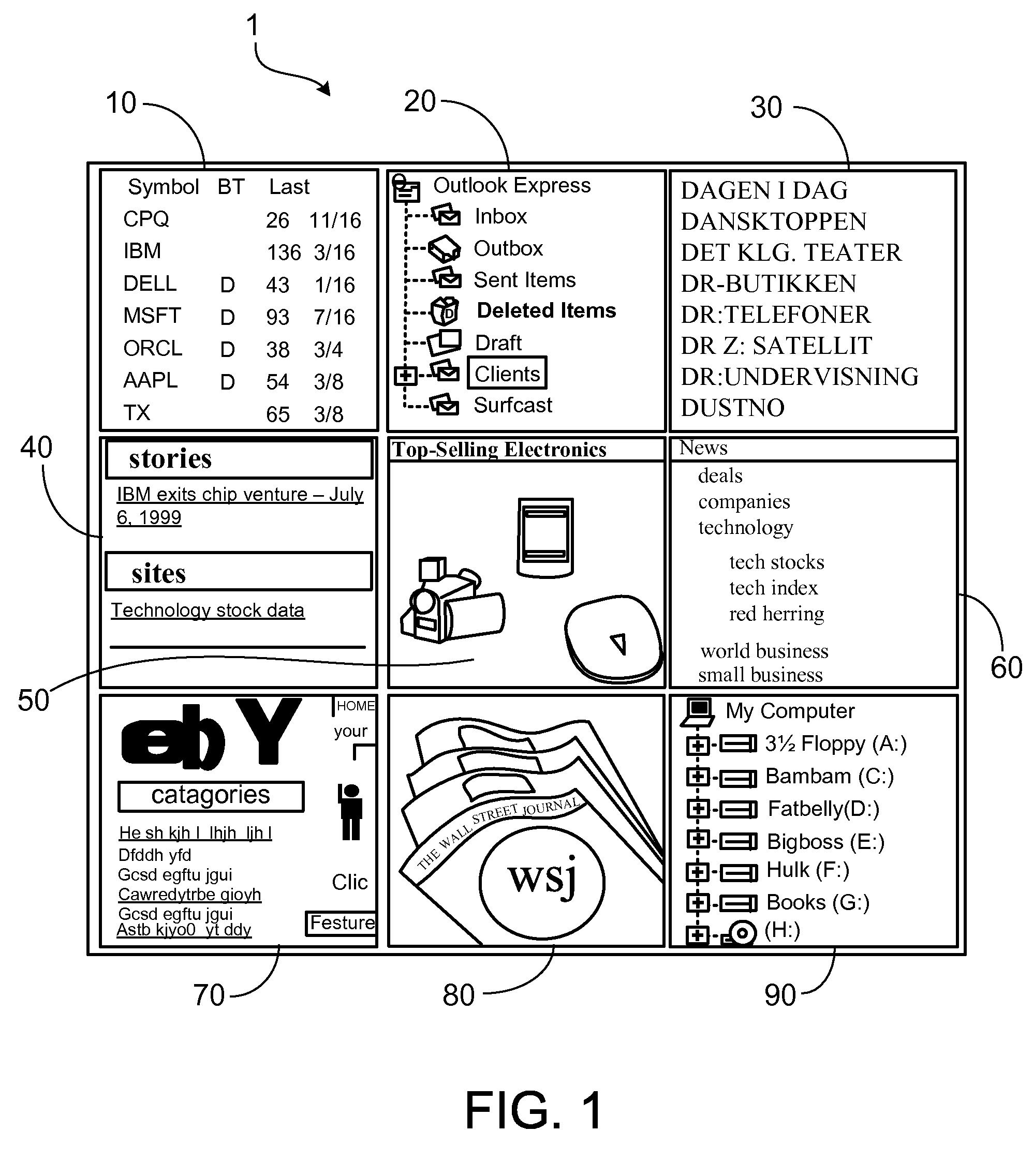The variety and complexity of communication devices proliferates and the number of users escalates.
As a result, users are faced with increasingly complex systems and interfaces with which to manage multiple sources of information.
As might be expected, these demands have exposed substantial problems in current communications technology.
In particular, users are faced with insufficient resources to manage and access the volume and variety of information available to them in an efficient and productive manner.
While a variety of tools designed to assist in accessing and managing these resources have been created, these tools remain unsatisfactory.
Consequently, users are impeded by the myriad of information sources, each with its own method of use and often with its own login and
password requirements, as well as by slow retrieval times to access the information.
The result is an unacceptable
delay for many operations, as well as inefficiencies in transferring information from one source to another.
If an individual were receiving one video
signal, it is usually impractical to receive a second at the same time due to bandwidth constraints.
Prior to requesting and subsequently receiving the data, the user has no way of knowing whether the data has been updated.
The act of manually refreshing the content of alternate programs in order to ascertain which have any new material to offer is fundamentally inefficient.
For complex information such as a video
signal, this can take longer than a minute to occur; and, even for simple information, this process can take many seconds.
Thus, the user is denied real-time or near real-time access to the information.
Present technology that locally stores or “caches” previously accessed information to make it available to the user more rapidly does not solve this problem, because the cached information is necessarily old.
As a result, the user is denied real-time or near real-time access to updated information.
While this arrangement frees a user from actively participating in the download, the price is that the user has little control over the organization of the information and can only practically
handle a small number of such transmissions at any one time.
The current art lacks any technology for controlling the respective refresh rates of several simultaneous information sources.
Furthermore, the current art lacks technology that can automatically design an appropriate
refresh rate based on the type of data that is received.
At the same time that users are limited by
system resources, they are also finding that they have no effective way of managing the multiplicity of available data types and information sources.
It is difficult both to conduct two or more different types of computing activities at the same time or to monitor two or more different information sources simultaneously because the tools available are confusing, inflexible, and / or otherwise difficult to implement.
In addition to restrictions in the capacity of today's networks, there is very little conformity amongst the information content.
Another lack of conformity is the different mode of behavior for programs that address different types of information.
The nature of the application program windows and their respective icons predominantly found on today's computer displays is restrictive.
Thus, while a window may be resized as appropriate, it will frequently occupy the full display area, effectively limiting the user to a view of a single program.
Icons, in contrast, offer ease of display when multiple programs are active, but they do not permit viewing or control of the underlying program or data represented thereby.
Consequently, the user's viewing options are limited to a choice between one presenting very limited information about a multitude of programs and information and one presenting full information, but of only a single program or
data source.
The fact that the GUI's of the present art are largely restricted to icons and windows diminishes the capacity to organize, manage, and access available information.
Neither provides visual immediacy or ease of
layout.
Furthermore the current art is deficient in respect of organizing multiple sources of information in a relevant manner that takes into account relationships between the various sources.
 Login to View More
Login to View More  Login to View More
Login to View More 


